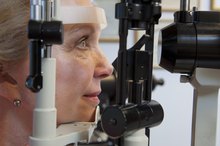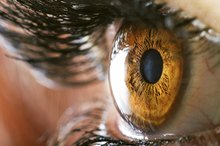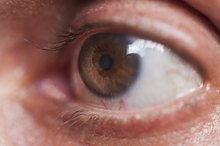What does fact checked mean?
At Healthfully, we strive to deliver objective content that is accurate and up-to-date. Our team periodically reviews articles in order to ensure content quality. The sources cited below consist of evidence from peer-reviewed journals, prominent medical organizations, academic associations, and government data.
The information contained on this site is for informational purposes only, and should not be used as a substitute for the advice of a professional health care provider. Please check with the appropriate physician regarding health questions and concerns. Although we strive to deliver accurate and up-to-date information, no guarantee to that effect is made.
What Causes Eye Stroke?
A stroke in the eye results from a blockage that limits or completely prevents blood flow to one or more parts of the eye. In most people, the eye stroke occurs without pain or warning, and most people lose a significant amount of vision as a result. For many people, this vision loss is permanent. Knowing some of the causes for eye strokes may help determine the best possible treatment.
If you are experiencing serious medical symptoms, seek emergency treatment immediately.
Retinal Vein Occlusions
The retina lines the back of the eye, and this sensitive tissue relays visual information to the optic nerve, which then transmits this to the brain. The retina needs blood for nourishment, and veins transport the blood away from this important tissue. If a blockage occurs in a retinal vein, the pressure will often cause a hemorrhage of the vein or smaller capillaries. The fluid will leak into the retina, causing swelling that will disrupt vision.
Steroid injections may help reduce the swelling on the retina. Other treatments, such as laser or surgery, may help dissolve the clot that caused the eye stroke. However, these treatment options may not work for every patient.
- The retina lines the back of the eye, and this sensitive tissue relays visual information to the optic nerve, which then transmits this to the brain.
- The fluid will leak into the retina, causing swelling that will disrupt vision.
Retinal Artery Occlusions
Vitamins for Retinal Detachment
Learn More
Retinal arteries deliver blood to the eye, and if one of these arteries has a blockage, the nourishing blood will not reach the retina. This blockage may cause a severe, sudden loss of vision 1. If the eye has complete vision loss, this may mean the blockage occurred in a retinal artery near the optic nerve 2. Partial vision loss may result from a blockage in an artery on other parts of the retina. For some people, vision loss may last only a short time, but others may have permanent loss of vision.
Doctors do not have treatments for retinal artery occlusions, but they may give medications to try to break up the blockage, or the doctor may massage the eye to move the clot 2.
- Retinal arteries deliver blood to the eye, and if one of these arteries has a blockage, the nourishing blood will not reach the retina.
- For some people, vision loss may last only a short time, but others may have permanent loss of vision.
Ischemic Optic Neuropathy
A blockage may occur in the arteries of the optic nerve, a type of stroke in the eye called ischemic optic neuropathy. A person may experience mild to complete loss of vision as a result. Many cases of ischemic optic neuropathy occur as a result of temporal arteritis, a condition that doctors treat with corticosteroids. In most cases of vision loss due to ischemic optic neuropathy, the vision loss is permanent, but treating the cause may help prevent the occurrence in the other eye.
- A blockage may occur in the arteries of the optic nerve, a type of stroke in the eye called ischemic optic neuropathy.
- In most cases of vision loss due to ischemic optic neuropathy, the vision loss is permanent, but treating the cause may help prevent the occurrence in the other eye.
Related Articles
References
- All About Vision: Eye Occlusions, Blockages or Eye Strokes
- MedlinePlus: Retinal Artery Occlusion
- Boyd K. Retinal detachment: Torn or detached retina symptoms. American Academy of Ophthalmology. Updated March 1, 2016.
- National Eye Institute. Retinal detachment. June 26, 2019.
- National Eye Institute. Types and causes of retinal detachment. Updated July 9, 2019.
- National Eye Insititute. Vitreous detachment. Updated July 11, 2019.
- American Society of Retina Specialists. Posterior vitreous detachment.
- Boyd K. Retinal detachment: Torn or detached retina treatment. American Academy of Opthalmology. Updated March 2016.
- Thompson JT. Retinal tears, American Society of Retina Specialists (ASRS). 2016.
Writer Bio
Kate Beck started writing for online publications in 2005. She worked as a certified ophthalmic technician for 10 years before returning to school to earn a Masters of Fine Arts degree in writing. Beck is currently putting the finishing touches on a novel.









